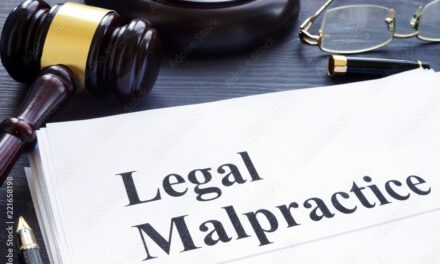Tech E&O, Network Security, Internet Media, and MPL Insurance Policy
The substance of the insuring agreement reads this way:
- defamation,
- trade disparagement,
- plagiarism,
- false light,
- false advertising,
- violation of the right of privacy,
- the seclusion of a right to publicity
- copyright infringement,
- many trade infringements, of various sorts,
- unauthorized use of various things, formats, plots, etc.
Significantly, the so-called “cyber-world” and “real-world” can overlap here. Here is a crucially important example, copyright violations. The object taken can originate in one of the worlds and the violation occurs in the other. Of course, they can both happen in the “cyber-world,” and this coverage applies.
Hacking is a highly publicized example of this sort of thing. It starts in the “real world,” passes into the “cyber world,” and then impacts the real world.]
[Here is another, rather different, recent, distressing example. Someone got a hold of a copyrighted pornographic video, obtained the copyright for itself, and then posted them. It found those who were then downloading it illegally (even once), sued many of them (using boilerplate pleadings), and quickly settled with those downloaders who were willing to settle for less than their costs of defense. Many people either didn’t want to spend the money on defense or didn’t have it. Besides, who wants to know about your habits when it comes to porn. These scum bag lawyers and their minions made a good deal of money before getting caught and sanctioned by the court. The judge also sent information to disciplinary committees of various bar associations, relevant information to other courts where they appeared and saw to it that they were left open to civil suits. (Of course, criminal prosecutions may also turn up, since this was probably some sort of swindle using federal courts.) Ingenuity 13 LLC v. John Doe, 2013 WL 1898633 (C.D. Cal., May 6, 2013).]
So an EPWA is a “WA” committed in relation to EP. Now, how–more or less–is the phrase
Electronic Publishing defined. It is “the reproduction, publication, dissemination, transmission or release of information, including Electronic Data and other various cyber-type things on a website or operated and owned by the Company or Computer System of the Company, provided [it is that of the Company by itself.]” Notice that the definition of EP contains other definitions, of which–that of Electronic Data–is on the complicated side.
Several features of the insuring agreement as portrayed here are worth noting.
First, as with some of the other insuring agreements, the insured has a very long list of propositions it has to prove in order to begin to qualify for coverage. (And this doesn’t even address the exclusions, even those are for the insurer to prove, so long as they are not exceptions to the exclusion built into the exclusion.) This is not an easily played game.
Second, the Insurer has a duty to “pay on behalf of the Insured all Loss[es]. . . .” that the “Insured is legally obligated to pay as Damages as the direct result of any. . . . The phrase “pay on behalf of” is a crucial phrase here. It means that the Insurer will not wait to pay the Insured until it has spent money on necessary activities; it will pay upfront to whoever has a right to be paid by the Insured
Third, the Insurer’s duty to pay applies only to damages that are the “direct result” of an action. As has already been pointed out in another Part, there is a slew of disputes arising out of so-called “real world” policies regarding the meaning of that phrase. Presumably, it is a jury question, but it can be contested for a very long time.
Fourth, it is extremely important to remember that the term Loss includes not only Damages but Claim Expenses. The two ideas are obviously different. The latter includes the Insurer’s duty to defend, and, so far as I can tell, not much else.
Fifth, it is tempting to say this: the insuring agreement I.F is saying that the Insurer has the obligation to pay defense costs only if the Insured is legally obligated–and so have been found to be legally obligated–to pay Damages. This idea is absurd from a temperate view, among others. If I have read the language correctly, then the insurer would have no duty to make payments on behalf of the insured until after it was determined that the Insurer was legally obligated to. . . . Hence this is not a really possible reading.
Sixth, another way to read this insuring agreement is this one: the agreement says that the Insurer will pay on behalf of the Insured all Loss “that the Insured is legally obligated to pay as damages.” But the term Loss contains two parts. Only one of them pertains to Damages. The Insurer has promised to pay Damages only. It has not promised to pay any other component of the definition of Loss. If this is right, then the Insurer has no duty to pay for any part of the Insured’s defense. Insuring agreement I.A. does not restrict the Insurer’s obligations to Damages only. It covers all Loss, so it covers costs of defense as well. (Now, I must confess that I have a feeling I’ve missed something. Intuitively, it doesn’t seem probable that a liability insurer selling a policy like this one, would not include a duty to defend. Nevertheless. . . .)
Seventh, this problem is one of appearance only. There is a separate section in which the duty to defend liability cases is set forth. This fact may be confusing even to the more experienced reader. The reason is that the duty to defend it is usually set forth in the insuring agreement section of a policy. Here the opposite is true. That duty gets its own section, The insurer’s duty to defend in this policy may be weaker than in many so-called real “world policies.” Most policies of the so-called “real world” require a liability insurer to defend its insured if the plaintiff’s pleading states–or, probably in many jurisdictions, sketches a covered claim; it does not require that the claim actually be covered. The plaintiff (and possible victim) can be wrong about what is asserted in the pleading or even lying, and there is still a duty to defend. The liability sections of this policy don’t appear to say that. It at least appears that the claim must actually be covered. I don’t see how that can be true, but if I have understood the language, that is what it says.
With respect to exclusions, there are a lot of them. Almost all or all of them are subject to exceptions. Both of them are complicated. The list of exclusions, however, is very similar to that found in so-called “real world” policies. For example, there is no coverage for dishonest actions and actions performed for the purpose of profit.
One significant difference is that, like most cyber insurances but unlike many “real-world policies,” injuries to human bodies and tangible property are excluded.
Another exclusion quite specially connected to I.F is an exclusion for most “unsolicited electronic dissemination, faxes, emails, or other communications by the Insured or any other third party,” including those which violate statutes, with various exceptions.
Much more can be said and argued, but enough is enough. Coverings of coverages can run on forever, and maybe this has already gone on too long. So it’s time to pass on.





Recent Comments